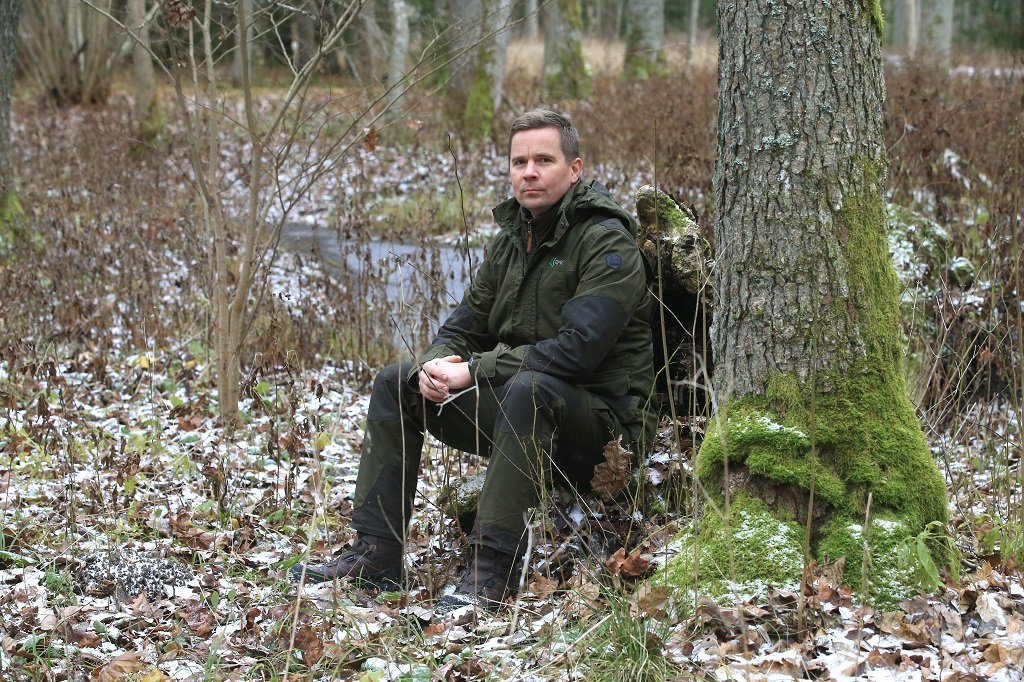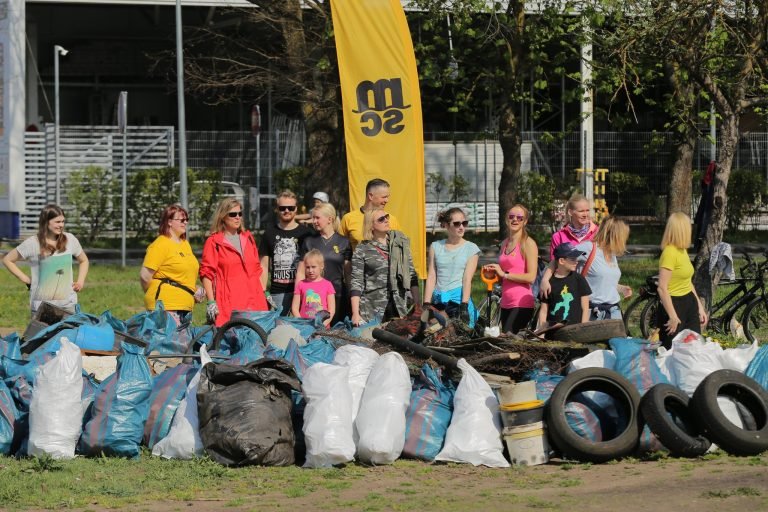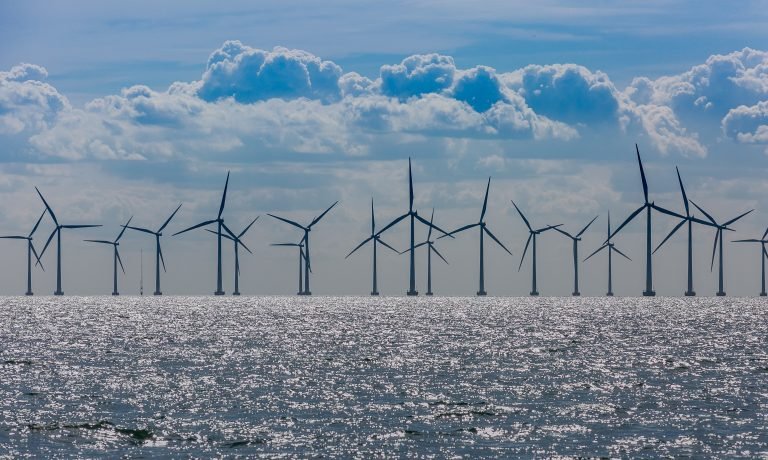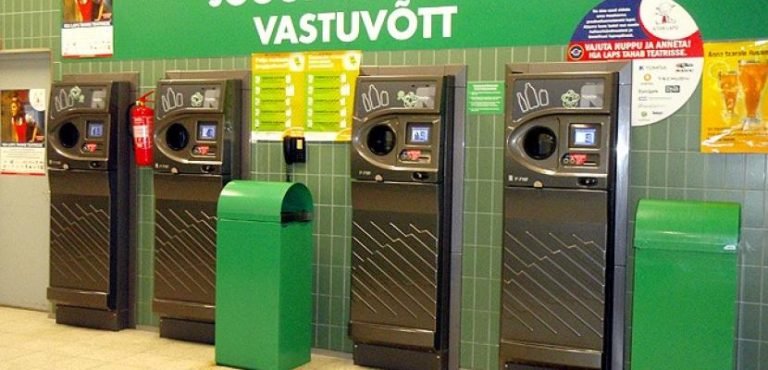Journalist’s Ain Alvela interview with Mikk Marran, the Chairman of the Management Board of the Estonian State Forest Management Centre (RMK), who thinks that the RMK’s development plan is placing a strong focus on promoting environmental education, particularly in forestry. The state already has the necessary infrastructure in place, and, as of now, the funding allocated for its maintenance will not be reduced.
I spoke to Mikk Marran, celebrating two years in this position in November, about the present and future of state forest management, while RMK is undergoing some quite transformative times.
The cause of this transformation is mostly due to climate goals. The new draft laws introduced to wider public in August, namely the Climate Resilient Economy Act, and proposals to changes to the Nature Conservation Act and the Forest Act, which all directly or indirectly also impact future activities of RMK.
In addition, RMK had also recently published its development strategy for the period 2024–2028, which, as Mikk Marran says, has justified itself even despite the risk of this being done before the enactment of the new laws as the RMK’s future vision of Estonian forestry, including the management of state forests is well harmonized with the government’s own view.
By now it is known almost in full certainty that forest cutting volume of state forests is going to decrease, renewal felling has already been completed in the protected areas, the size of the clearcutting areas is decreasing, some additional parts of the state owned lands will probably go under conservation and RMK will have to start concentrating more on ensuring the sustainability of forest resources management, habitat restorations, testing out the possibility for continuous cover forestry, establish more mixed forests etc.
Previously confidential long-term contracts for timber sales between RMK and companies are now already from the beginning of this year public. Also, those who create a higher value for the local wood resource are now favoured in getting a contract.
Mikk Marran came to lead RMK from the country’s defence structures, and upon taking up his new position, he frequently had to address questions about his expertise in forestry. While at the time, he often turned these questions into jokes, talking about long and short thorns, then now he is already implementing the new direction for RMK.
The questions are answered by Mikk Marran, Chairman of the Management Board of RMK.
How have the first two years as the head of RMK been for you?
The adjustment period is long over, and thanks to my wonderful colleagues, who are true experts in their fields, it went relatively smoothly. Right now, I feel more of a positive impatience and excitement, wondering if we will be able to fully achieve all the goals set in the new development plan. Regardless of that, I can confidently say that the state forests have been well managed already for decades – both in preserving natural values and in growing commercial forests.
But there is likely a fair amount of uncertainty as well, especially considering numerous upcoming changes in laws?
It is true that the current situation is quite dynamic – there is a new so-called climate law coming, along with changes to the Nature Conservation Act and the Forestry Act. These will certainly have some impact on RMK’s operations. However, I must say that in some cases, RMK has already been ahead of these legal changes. For example, several proposals in the draft Forestry Act will formalize practices that RMK has been following either since the beginning of this year or even earlier. So, it is encouraging to see that we are in step with the Ministry of Climate.
You adopted the development plan without knowing the exact details of the upcoming legal changes. How well does the development plan now align with what is set out in these drafts?
Surprisingly, the development plan aligns with them very well. If you recall, at the end of 2022, there was a discussion about whether the Estonian Forestry Development Plan should be completed before RMK’s own plan, or vice versa. Logically, the general Forestry Development Plan should come first. However, it became clear that it would not be ready in time, so we took the initiative and completed RMK’s development plan first. I would argue that in several areas, especially regarding sustainable forest management and conservation work, RMK is even a step ahead of these legislative drafts. When creating the development plan, we took a conscious approach to focus more on the biodiversity of our forests and to manage them sustainably. I believe that this is also broadly what society expects.
Both the development plan and the legal changes foresee many activities that involve costs – even if the amount of harvested timber does not decrease, expenses will still rise. Does this mean the state should lower its dividend expectations from RMK?
It is true that many of the associated activities will impact RMK’s long-term financial outlook. When we, together with the RMK board, laid out a longer-term forecast at the end of last year and the beginning of this year, we concluded that RMK could pay dividends of 38 million euros in the coming years. However, I must stress that this forecast assumes that all other conditions remain the same as they were at the time. For example, if more land from RMK’s commercial forest portfolio is designated for nature conservation, this will naturally affect both logging volumes and dividends. But in addition, RMK incurs costs within its own budget – environmental education and visitor management, where we invest 8–10 million euros annually. This year, our budget includes 10 million euros for purchasing conservation lands from private owners, and next year that sum is expected to reach 12 million euros. So, alongside fulfilling the obligations from the state’s expectations, we have also set our own goals, such as increasing our conservation efforts.
Given the tight state budget, nature lovers might worry that funding for nature conservation or environmental education could be reduced if the state does not receive the expected dividend from RMK. Is there any basis for this concern?
No, at the moment we have no plans to deprioritize environmental education. In fact, the development plan specifically focuses on promoting environmental education, particularly the forestry aspect. We have developed our own infrastructure for this, and the allocated funds for maintaining it are not expected to decrease. The key question for the coming years is how we can most effectively utilize this network to bring environmental education, especially knowledge about forests, to even more people.
Regarding these legal changes, what are the biggest challenges ahead for RMK?
With the new climate law, which is currently in the consultation phase, discussions are still ongoing. However, if the state starts directing logging volumes based on climate goals, I believe even more emphasis will need to be placed on ensuring that the harvested wood is maximally utilized within Estonia. Additionally, we anticipate that there will be more protected areas in the state forests. This directly impacts RMK’s operations. Currently, 41% of RMK’s forest portfolio is already under protection. However, I think the 30% protected land goal from the Nature Conservation Act draft – setting both a floor and a ceiling – is a good initiative. At RMK, we have been of the opinion that if the conservation value of a certain area has diminished over time, that land could be returned to commercial forest use, and vice versa. I also stated this last year in front of the Parliament.
The draft Nature Conservation Act also includes a ban on clear-cutting in the buffer zones of protected areas. RMK has already implemented this from the beginning of 2024, in line with its development plan. Since we previously conducted such logging very minimally, this change will not significantly impact our timber harvesting volumes.
The draft Forestry Act includes one nice improvement: the section on forestry-related research and development will be enhanced. For instance, it will allow RMK to test out various methods of continuous cover forestry in collaboration with research institutions. We have already agreed with the Estonian University of Life Sciences to set up test areas to explore the feasibility and effectiveness of continuous cover forestry. We might also include some so to say home forests or high public interest areas in these trials. Continuous forestry has been tested both at RMK and at the university before, and I hope we can build on those experiences. The introduction of plantation establishment is also new for both private forest owners and us. Having clear regulations in the law will provide legal certainty on how to manage these plantations. We have already reviewed our land portfolio and established that in some extent RMK could also develop some plantations.
Finally, regarding the size limits for clear-cutting areas. In mid-summer, we decided that starting next year, state forests will have a 7-hectare limit for broadleaf forests and a 5-hectare limit for coniferous forests. Although the draft law specifies a maximum clear-cut size of five hectares for broadleaf stands, if this remains the case, RMK will also reduce its broadleaf forest clear-cut size accordingly. It is worth noting that RMK’s current average clear-cut size is already around 2.2 hectares.
And what about the logging volumes? Until now, the minister set the annual logging volume each year, but now there is a plan to fix the annual volume for state forests over a five-year period.
Yes, the current regulation technically states that RMK’s logging volume is set for five years, but in practice, the number is reviewed annually. I strongly support the idea of agreeing on a five-year plan that is not easily altered in the meantime. This is a crucial stability factor for both RMK and the Estonian timber industry. For our local companies, it is not so much about having the maximum possible logging volume but rather the assurance of a stable supply of raw material over the years. RMK currently supplies about a third of the Estonian timber market volume, and we do so, figuratively speaking, in all weather conditions.
What if the logging volume in state forests starts to decrease?
Indeed, the logging volume in state forests is expected to decrease somewhat in the future. This year, we are logging 9,180 hectares, plus additional areas affected by bark beetles, but in the coming years, we will likely move step by step towards around 8,000 hectares. The exact figures will become clear once the plans for new conservational areas are finalized, and the impacts of existing conservational areas are assessed. However, it is important to note that even in previous years, the logging volume in state forests has remained below four million cubic meters.
How will the added value of wood be assessed in long-term contracts? Will those who add more value to the wood get a purchasing advantage?
In fact, we have already started doing this since the end of last year, and we agreed with the stakeholders to review the system again this fall. The system works in such a way that we aim to prioritize companies that contribute to achieving climate goals through their activities, particularly those that produce longer-lasting products. These companies receive higher value points in our wood sales system. For example, pulp production earns two additional points, paper, cardboard, and chemical products earn three, but fuel production earns zero additional points. This methodology is based on the climate impact assessment recommendations of the UN Climate Panel (IPCC). At the top are durable products like window frames, doors, plywood, and glued wood products.
You have also set a goal to stop exporting pulpwood. However, there is relatively little demand for this grade of wood in Estonia. So where will the pulpwood from the forests go in the future?
It is true that of the approximately one million cubic meters of pulpwood produced annually from state forests, only about a third is currently processed in Estonia. The rest goes to pulp industries in Finland and Sweden. A few months ago, RMK initiated a process to develop wood chemistry, starting to look for companies interested in establishing a facility in Estonia for the chemical valorisation of local wood. The goal is to have a production unit in Estonia by the end of the decade that can use so-called low-value wood as raw material. This plan has several benefits: RMK would have a stable buyer for its wood at market prices, the Estonian economy would benefit from products with higher added value that can be exported at higher prices, new jobs would be created, and construction and service companies would have work, which in turn would increase tax revenue for the state.
If only everyone, including those calling themselves environmentalists in a way or another, understood this, perhaps we would already have such factory by now?
I truly hope that the people of Estonia understand the necessity of this, that they want our economy and overall well-being to grow, and that they support the idea of adding value to our own renewable natural resources here in Estonia. However, obtaining all the necessary permits and approvals is a lengthy process. A broad-based expert commission is currently working on it, and we are likely to present the first overview to the RMK board in the second half of September. After that, we can plan the next steps.
But until the factory is built, what will happen to the pulpwood?
First, we offer the pulpwood through long-term contracts. If there is no demand there, it goes to public auctions. However, it has been decided that RMK will no longer sell wood through intermediaries under long-term contracts. As it stands, around 700,000 cubic meters of pulpwood from state forests are exported from Estonia without being processed.
What does making long-term contracts public actually mean for RMK?
The idea behind making the long-term contracts public was that, since we are dealing with state-owned assets, these transactions should be as transparent as possible. We gave our clients a year’s notice about this change. As a result of the adjustment, we lost only one or two of our nearly 100 long-term contract clients. So, it is clear that everyone understands the change, and there have been no setbacks. When the numbers were not public, it left room for claims that someone might have gotten a better deal than the market price or that something was done incorrectly. RMK does not need that kind of speculation.
Do you sometimes feel that public opinion, including the media, equates all the negative examples in forestry with RMK? How do you perceive this?
We do sometimes feel that RMK is blamed for all the so-called sins committed in Estonia’s forests. This is somewhat understandable since we are such a major player in the country’s forestry sector, responsible for managing and caring for about half of Estonia’s forested land. However, the fact that society pays close attention to what happens in state forests is normal and, in some ways, beneficial. It is good that our activities are constantly under scrutiny, and I am sure this will continue. That is why we must always measure seven times and cut once.
The engagement meetings for high public interest areas have been put on hold. For how long?
Indeed, we have deliberately taken a pause. The goal is to first break down the system and then put it back together. In this process, there are two main objectives. First, we will rewrite the principles for managing the so to say home forests or high public interest areas. Second, we will develop a good practice strategy for engagement. We will continue only with the tasks that have already been agreed upon previously. Moving forward, the principle remains that we strive to reach agreements on all high public interest areas – we talk, meet, and explain. If necessary, we will meet several times because we understand that it is often not possible to achieve mutual understanding and consensus in just one meeting. We are also ready to offer local communities and municipalities several different forest management scenarios, along with the long-term impacts of each. We believe that RMK should not put its ideal scenario on the table at the first meeting; the solution should rather emerge during discussions. My sincere hope is that with our new approach, we can ease tensions and engage in more constructive dialogues with the communities.
RMK has a rather unique legal status, but from time to time, discussions arise about reforming it in one way or another. Could RMK remain in its current position in the future?
Yes, RMK is the state’s only commercial entity, and we currently operate within the legal framework as it is. However, discussions about the future functioning of RMK are certainly welcome. There have been various ideas, including the possibility of listing RMK on the stock exchange or adopting the Finnish model, where their RMK has established several subsidiaries with specific goals. However, at present, there are no concrete proposals on the table for changing RMK’s status. We are focused on implementing our development plan and achieving our planned results.
“In forestry, there is a principle that two generations of foresters must carry out their daily work so that the third generation can harvest valuable timber from the forest,” Mikk Marran


















